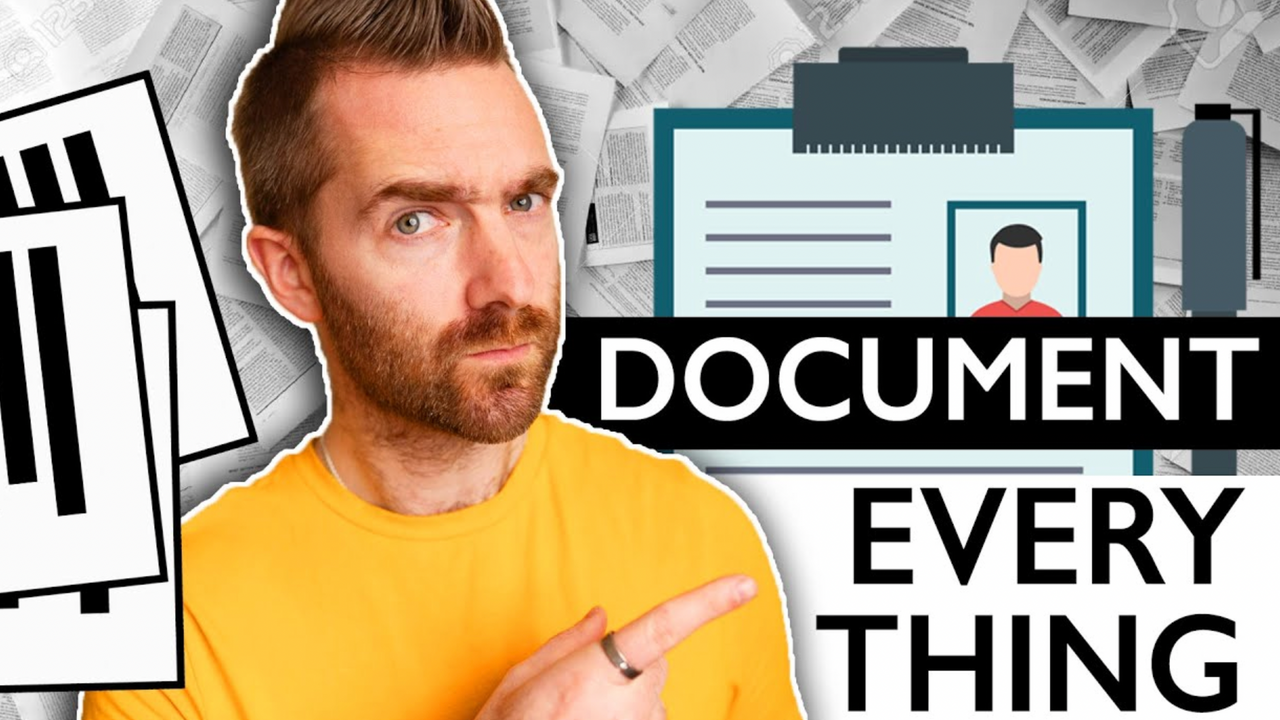
How to document EVERYTHING in your MSP
Feb 21, 2022So you’ve just invested in a new documentation system, like IT Glue, and now you’re looking at the challenge ahead of you which is - how the crap do I get all of my team to actually use it?
How do I get them to keep it up to date?
How do I get them to dump all of the initial information in there so that we can spread the knowledge and make sure that we’re sharing our knowledge properly?
This is just one of the many, many challenges bestowed upon you when running your MSP.
Why do I know?
Because I recently sold my MSP, we grew from just me to 16 staff, and so I know all about trying to get your team to pull their weight and do what you want them to do, which is to keep the documentation up to date!
You’ve invested, potentially quite a lot of money, and committed to it for a year, into a documentation system.
Whether you are starting from scratch and you need to document everything in your business or you’ve made a start, but stuff is incomplete.
The challenge you have here is making sure that your staff is spending some time in their day, to document all of that stuff. The internal processes, customers' technical information, SOP’s, standard operating procedures, passwords, network diagrams, all of the things!
But it never happens. People are too busy. They don’t do it.
They definitely won’t do it if you ask them to do it unpaid and in their spare time, which is one approach I saw. So how do you do it?
How did I get my own team of staff to document all of this stuff?
The answer is actually really simple. You get your clients to PAY YOU to document everything.
What!? That sounds like madness!?
But, it’s really not.
The first way, that I found, that works, every time for getting your staff to actually document the stuff that you ask them to document is to make it part of their job.
That means, that when you quote for something, whether it’s a new PC or a Cloud migration, you include time for doing the documentation.
It means that on every ticket, on every project, there is time allocated for doing the documentation.
It means, that on those tickets, whether they are pre-paid, contracted clients, or newly quoted projects, you are charging the time that it takes to document everything, to the client.
But my client isn’t going to pay me to document their own stuff? They are. Because that is the service they are paying you for.
Part of the value of a really good MSP is how good their internal and customer-facing documentation is.
Good, accurate documentation that’s up to date, enables your team to do their respective jobs more efficiently, than without it.
Imagine not having documentation, and one of your team having to wait hours, possibly even days if they have to wait for someone who has all of the information, but isn’t available because they are sick or on holiday.
It just doesn’t make sense to not make this a priority, and yes, to charge it on to your client.
I’m not saying that you should be sending them line-by-line invoices that says - Ticket number 567, 2 hours for documentation.
But it should be bundled together with the ticket, the time it takes for them to write up the ticket notes and the email they probably send to a client to update them on what they’ve done - before they do that, make sure they’ve completed the documentation.
The best way of doing this I’ve found is to have a checklist on your ticket, and depending on your PSA, you can automatically have this added, and it can be set to not allow the ticket to be closed unless someone has checked off that item.
If something doesn’t exist, tell your team to create it. Even if it’s super basic because they’re in the middle of other things. Having something that's been created and not completed, is better than having nothing at all.
If it’s wrong, then the next person who comes across it can fix it, and then at least you can retrospectively go back and fix others that have used the documentation.
The alternative is you have no documentation and everyone does their own thing so you won’t have a clue how anything is configured!
So something is better than nothing. Each time someone uses the SOP, they can make small improvements, add some detail, until over time you have a fully detailed and accurate process to follow.
So that fixes the day-to-day things generally changing.
But what about if you are so green to this that you have very little, or no documentation at all to start, but you have a number of clients that need documenting?
Because you’ll never find enough hours in the day to go through and fill in everything that’s possibly needed. The best solution I found was to assign your engineers to their own customers.
You might already have this, if you haven’t already, then consider allocating every customer of yours a primary and secondary engineer.
Each engineer then has their own clients that they are mostly responsible for. Now what you can do, is give each engineer 4 hours a week, and in those 4 hours, they have to work through their own list of customers and document as much as they can.
And you keep repeating this until all of the clients are up to date.
If you want more information about how to run a successful MSP sign up for my weekly newsletter and subscribe to your YouTube Channel for updates.
💌 Sign up for the weekly newsletter: https://www.notabusinesscoach.com/
🎥 How to Price and Package your MSP Services: https://youtu.be/Yw4wMevI-Vg
🎥 MSP 101 Marketing Pillar Series: https://www.youtube.com/playlist?list...
This. But in your Inbox!
Get the latest Blogs, Resources, Templates and Courses straight to your Inbox.
We hate SPAM. We will never sell your information, for any reason.

